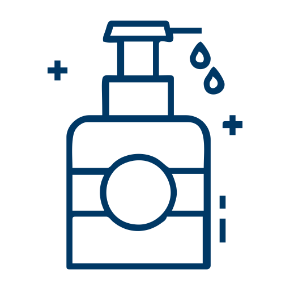Le dernier jour de l’an est souvent l’occasion de faire retentir des pétarades et des feux d’artifice. Cependant, pour nos amis à quatre pattes, qui ont le sens de l’ouïe plus sensible que le nôtre, ce moment est loin d’être apprécié. Peur, aboiements, tremblements… chiens et chats paniquent et prennent souvent la fuite. Si les issues sont ouvertes, certains, affolés, tentent même de fuir ces bruits foudroyants qu’ils assimilent à un danger. Une fuite qui n’est pas sans conséquence, car ils peuvent se perdre sans jamais retrouver leur maître ou être percutés par un véhicule.
Voici donc quelques conseils pour protéger vos animaux de compagnie durant les fêtes :
Créez un espace plus sûr et plus confortable à l'intérieur de la maison.
Rassemblez leur couverture, leur jeu préféré et tout autre accessoire auquel ils sont habitués dans un espace où ils se sentiront en sécurité. Toutefois, gardez l’espace aéré afin qu’ils ne se sentent pas trop enfermé.
Essayez de maintenir à distance des feux d’artifice
Cela permettra d’atténuer cette réaction de peur chez les animaux de compagnie. On peut par ailleurs assombrir l’endroit où se trouve l’animal afin de l’apaiser. Une douce musique ou un téléviseur allumé peut également aider à réduire l’effet des détonations en les noyant dans un bruit de fond.
Réconfortez vos animaux de compagnie
Autant que possible, ne soyez jamais très loin ; cela les rassurera et les empêchera d'être craintifs. Ne les punissez également pas ; restez calme, adoptez un comportement normal et montrez à votre animal de l'affection.
Utilisez des tranquillisants à bon escient
Ces compléments aident à détendre et à libérer l’anxiété, la nervosité et les réactions agressives chez les animaux.
Nous vous conseillons les comprimés Calmivet de Vétoquinol qui aideront vos amis à quatre pattes en ce sens. Ce complément se doit d’être administré par voie orale. Il est recommandé de donner à votre chien 1 à 2 comprimés pour ceux pesant 10 kg et à votre chat 1 à 2 comprimés pour ceux pesant 5 kg, par jour. Le dosage dépendra du poids de l’animal. Les effets sont généralement perceptibles dans les 10 à 30 minutes suivant l'administration.
Calmivet est disponible dans vos pharmacies MedActiv. N’hésitez toutefois pas à demander l’avis de votre vétérinaire au préalable.







_400.png)




